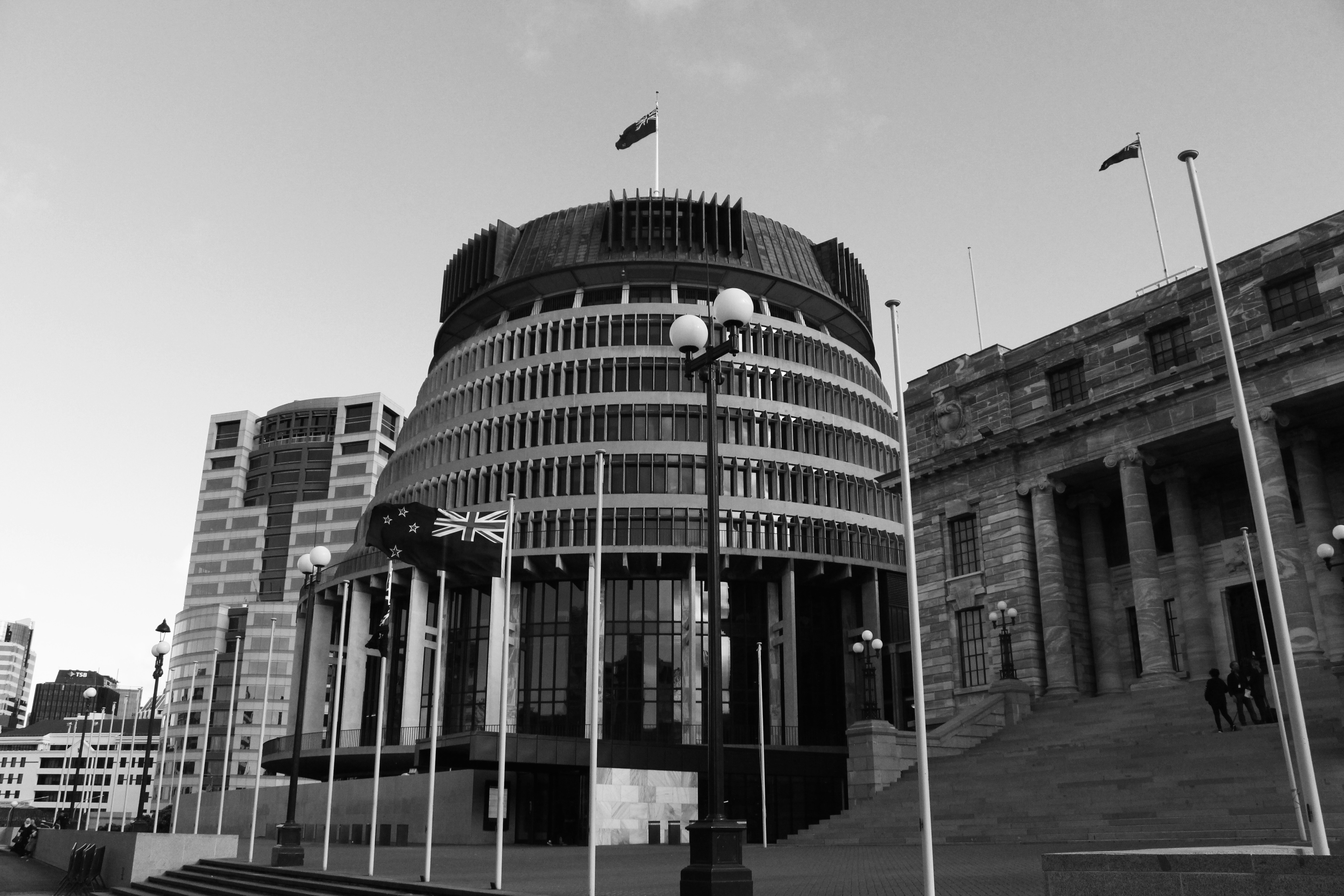Reaching the 15% with the Highest Needs
Reaching the 15% with the Highest Needs – 15% of Kiwis account for half of all social service use, yet mainstream support often falls short. By redesigning services around real needs, we can drive better outcomes for those most at risk.


The shape of need
A core principle of social investment is taking a ‘customer focus’. This means adapting services to meet the long-term aspirations and daily realities of the people using them.
So what does that reality look like in New Zealand? The picture below shows us something very important.

The Mason Curve was created using de-identified data from the Integrated Data Infrastructure, a linked data environment maintained by Statistics NZ that maps the journeys of most New Zealanders through many government services throughout their lives.
Each point on the line represents a person, and the height of the line shows the amount of interaction they have over their lifetime with social services funded by the government such as health, justice and welfare, in dollar terms. You can see that the 15% of New Zealanders with the highest support needs use 50% of government services (the dark area). The other 85% of New Zealanders use the other half.
These ~700,000 people are the biggest customers of our social services system. We were privileged to meet a few of them in April 2025 when we visited the Downtown City Ministry (DCM) in Wellington. DCM provide support to people who are experiencing homelessness in the city, who have no money, no food and no roof over their heads.
From providers like DCM we learn something that is obvious but critical: the most vulnerable New Zealanders face significantly more complex barriers to achieving their aspirations than other New Zealanders.
This is backed up by the public data.
For example, the Ministry of Social Development (MSD) recently found that the 13% most disadvantaged older people in New Zealand experience vulnerability across two or more areas (either health, housing, finances, social connection or access to transport), while 54% of older New Zealanders experience vulnerability in none of these areas.
Additionally, the pattern of need was mirrored in our recent 'Charitable Sector Insights' report co-produced with Jarden, that analysed the impact of 108 programmes measured through our GoodMeasure tool. The analysis showed that 13% of people receive 73% of the investment.
Complexity not only compounds, but it manifests uniquely for each person. On any given morning at DCM’s hub in Luke's Lane in central Wellington, clients might choose to engage with a mix of five or ten different services depending on their specific circumstances such as dental care, food or physiotherapy. Sometimes it may take a year of building a relationship with staff to engage with any services at all.
This increased complexity means that the mainstream social services that work well for most people often don’t work well for the 15% of people who are most in need of layered support.
The most visible evidence of this is those most in need struggling to engage with mainstream services, or engaging only at the point of crisis.
For example, many of DCM’s clients need help from MSD to get income support, to get on the housing register and move into more stable accommodation. But doing this is very difficult.
Below you can see a summary DCM sketched out to us relating to the challenges their clients face in getting help via the mainstream system.
Underneath you can see the tailored support offered by DCM alongside MSD to bring the services onsite at the community hub, delivered in a specialised way for their clients.
Step one: get to the service
Mainstream
- Need a phone to call MSD
- Wait 30-80 minutes to speak to someone
- Book and wait for an appointment ~currently a 1 month wait time to register for a new benefit
- Need transport to the appointment
- Services on site
- Walk-in appointments
- Hub walking distance in the city centre
Tailored
- Services on site
- Walk-in appointments
- Hub walking distance in the city centre
Step two: enter the environment
Mainstream
- Security guards at the door
- Glass windows and crowded rooms
- Different and unknown staff
- No time to build trust before engaging
Tailored
- Friendly, personal service that is highly skilled
- Culturally led
- Warm environment
- Consistent staff
- Peer support workers with lived experience
- Opportunities for social connection and kai
- Unlimited time to build trust before engaging
Step three: engage with the service:
Mainstream
- Staff have very limited time to help
- Requirement to follow standardized processes
- Staff not trained to support with people in distress with complex needs, may be trespassed from agency
Tailored
- Staff have more time to help
- Flexibility to do what works and provide individualized support, such as sorting IDs to be able to access services and calling people to unblock processes
- Staff specialize in supporting people in distress with complex needs
- Continuity of support, you can come back later if needed
The bottom line of the Mason Curve:
Designing social services for the ‘’average user’’ is unlikely to help the 15% of New Zealanders in most need to achieve their aspirations. We need to understand our biggest customers, and adapt services to meet their complex and unique circumstances.
INSIGHTS
For the policymakers:
A common concern of policymakers is that if you fund on the basis of outcomes, providers might ”cherry pick’’ the people that are easiest to support.
A good way to counteract this is to:
- Understand the shape of need, identify who the target customer for funding is and where they sit on the curve of support needs.
- Identify providers who can build relationships of trust and adapt their services to effectively meet the needs of those specific people.
- Expect that different service provision models, with different investment profiles, will be needed for different parts of the curve.
For the analysts:
Averages can be very misleading. Customer segmentation is an essential analytical tool for understanding long term social return on investment in services. This segmentation is important not just up front when deciding where to focus investment, but even more so after services have been invested in: frontline operational data from providers is essential to determine who the investment is actually reaching, and whether access barriers are being overcome.
Some useful public data tools to get started with that are mentioned in this article are the MSD Older People’s Data Explorer and the Ohi Data Navigator.
For the frontline workers:
It can be helpful to think about where on the curve of complexity, or what mix of complexity levels, your organisation is best placed to support. Segmenting based on complexity within your population can help answer questions like:
- How long might we need to work with this family to empower them to engage with support?
- What’s the level of investment we should expect to make to help shift the trajectory of this person’s life?
- Do we have the right mix of direct services and partnerships to meet the needs of the different people we serve.
The shape of need
A core principle of social investment is taking a ‘customer focus’. This means adapting services to meet the long-term aspirations and daily realities of the people using them.
So what does that reality look like in New Zealand? The picture below shows us something very important.

The Mason Curve was created using de-identified data from the Integrated Data Infrastructure, a linked data environment maintained by Statistics NZ that maps the journeys of most New Zealanders through many government services throughout their lives.
Each point on the line represents a person, and the height of the line shows the amount of interaction they have over their lifetime with social services funded by the government such as health, justice and welfare, in dollar terms. You can see that the 15% of New Zealanders with the highest support needs use 50% of government services (the dark area). The other 85% of New Zealanders use the other half.
These ~700,000 people are the biggest customers of our social services system. We were privileged to meet a few of them in April 2025 when we visited the Downtown City Ministry (DCM) in Wellington. DCM provide support to people who are experiencing homelessness in the city, who have no money, no food and no roof over their heads.
From providers like DCM we learn something that is obvious but critical: the most vulnerable New Zealanders face significantly more complex barriers to achieving their aspirations than other New Zealanders.
This is backed up by the public data.
For example, the Ministry of Social Development (MSD) recently found that the 13% most disadvantaged older people in New Zealand experience vulnerability across two or more areas (either health, housing, finances, social connection or access to transport), while 54% of older New Zealanders experience vulnerability in none of these areas.
Additionally, the pattern of need was mirrored in our recent 'Charitable Sector Insights' report co-produced with Jarden, that analysed the impact of 108 programmes measured through our GoodMeasure tool. The analysis showed that 13% of people receive 73% of the investment.
Complexity not only compounds, but it manifests uniquely for each person. On any given morning at DCM’s hub in Luke's Lane in central Wellington, clients might choose to engage with a mix of five or ten different services depending on their specific circumstances such as dental care, food or physiotherapy. Sometimes it may take a year of building a relationship with staff to engage with any services at all.
This increased complexity means that the mainstream social services that work well for most people often don’t work well for the 15% of people who are most in need of layered support.
The most visible evidence of this is those most in need struggling to engage with mainstream services, or engaging only at the point of crisis.
For example, many of DCM’s clients need help from MSD to get income support, to get on the housing register and move into more stable accommodation. But doing this is very difficult.
Below you can see a summary DCM sketched out to us relating to the challenges their clients face in getting help via the mainstream system.
Underneath you can see the tailored support offered by DCM alongside MSD to bring the services onsite at the community hub, delivered in a specialised way for their clients.
Step one: get to the service
Mainstream
- Need a phone to call MSD
- Wait 30-80 minutes to speak to someone
- Book and wait for an appointment ~currently a 1 month wait time to register for a new benefit
- Need transport to the appointment
- Services on site
- Walk-in appointments
- Hub walking distance in the city centre
Tailored
- Services on site
- Walk-in appointments
- Hub walking distance in the city centre
Step two: enter the environment
Mainstream
- Security guards at the door
- Glass windows and crowded rooms
- Different and unknown staff
- No time to build trust before engaging
Tailored
- Friendly, personal service that is highly skilled
- Culturally led
- Warm environment
- Consistent staff
- Peer support workers with lived experience
- Opportunities for social connection and kai
- Unlimited time to build trust before engaging
Step three: engage with the service:
Mainstream
- Staff have very limited time to help
- Requirement to follow standardized processes
- Staff not trained to support with people in distress with complex needs, may be trespassed from agency
Tailored
- Staff have more time to help
- Flexibility to do what works and provide individualized support, such as sorting IDs to be able to access services and calling people to unblock processes
- Staff specialize in supporting people in distress with complex needs
- Continuity of support, you can come back later if needed
The bottom line of the Mason Curve:
Designing social services for the ‘’average user’’ is unlikely to help the 15% of New Zealanders in most need to achieve their aspirations. We need to understand our biggest customers, and adapt services to meet their complex and unique circumstances.
INSIGHTS
For the policymakers:
A common concern of policymakers is that if you fund on the basis of outcomes, providers might ”cherry pick’’ the people that are easiest to support.
A good way to counteract this is to:
- Understand the shape of need, identify who the target customer for funding is and where they sit on the curve of support needs.
- Identify providers who can build relationships of trust and adapt their services to effectively meet the needs of those specific people.
- Expect that different service provision models, with different investment profiles, will be needed for different parts of the curve.
For the analysts:
Averages can be very misleading. Customer segmentation is an essential analytical tool for understanding long term social return on investment in services. This segmentation is important not just up front when deciding where to focus investment, but even more so after services have been invested in: frontline operational data from providers is essential to determine who the investment is actually reaching, and whether access barriers are being overcome.
Some useful public data tools to get started with that are mentioned in this article are the MSD Older People’s Data Explorer and the Ohi Data Navigator.
For the frontline workers:
It can be helpful to think about where on the curve of complexity, or what mix of complexity levels, your organisation is best placed to support. Segmenting based on complexity within your population can help answer questions like:
- How long might we need to work with this family to empower them to engage with support?
- What’s the level of investment we should expect to make to help shift the trajectory of this person’s life?
- Do we have the right mix of direct services and partnerships to meet the needs of the different people we serve.

The Social Investment Agency: What we know so far
With SIA’s second funding pathway EOI now closed, we unpack what the Social Investment Agency is, what it aims to do, and what these changes mean for providers in the social sector, kicking off our new series on SIA and outcomes-based funding.

Part 2- Understanding the Intervention Logic
Part 2 of this series, unpacks the Intervention Logic, outlining how it differs from a Theory of Change and the role it plays in mapping programmes, evaluating outcomes, and supporting clear communication with stakeholders.

Part 1- Understanding the Theory of Change
In the first article in this two-part series we introduce the Theory of Change, a flexible framework that maps how services create impact. It explains its purpose, benefits, and why it’s a powerful tool for guiding, testing, and communicating change.

Why measuring social impact matters to funders and housing providers
Measuring social impact in housing helps funders and providers target services to residents’ real needs, improve wellbeing, reduce costs, and guide smarter decisions across the housing lifecycle with stronger outcomes for people and communities.
Get in touch
We help impact organisations know, show and grow their social impact. Let’s work together to do good, better!



